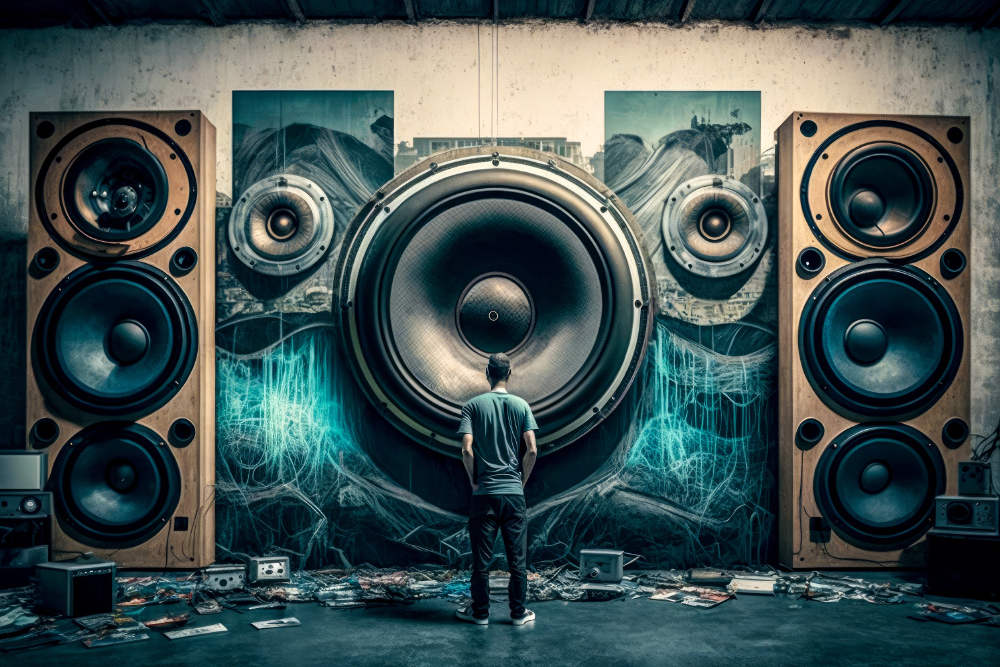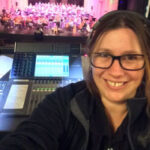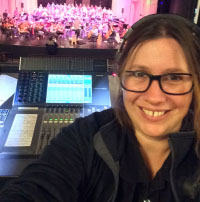I mix at a venue that recently instituted a sound pressure level (SPL) limit. While I firmly believe that limits are necessary, they must be grounded in a firm understanding of SPL measurement in order to be effective. In fact, this knowledge can be applied to a great many questions about health and safety, comfortable listening levels, and even mix technique.
This is the first installment in a two-part series that will explore this issue. Here, we’ll cover foundational knowledge about SPL in general, and next time, we’ll consider how to apply what we know in order to create safe and engaging live entertainment. Let’s learn about what we need to consider when creating and enforcing SPL limits.
What is SPL? Simply, it’s the change of ambient air pressure due to a sound wave. There are a few terms that are used frequently to describe sound levels that are not related to SPL. “Loudness” is a psychological perception of the intensity of sound, and is therefore subjective. One person may describe a sound as “too loud” while the person next to them may think the sound is “too quiet.”
“Volume” is another word that gets thrown around a lot. Since we’re speaking in scientific terms and volume is a scientific measurement of how much three-dimensional space an object occupies, it would be inappropriate to use this term to refer to sound levels.
It should be noted that it’s possible to be comfortable in a dangerous SPL environment. It’s also possible to be uncomfortable around SPL that is deemed safe. Human perception of loudness is not a good indicator of SPL. Therefore, having the correct tools and interpreting the data accurately is the only way of ensuring a safe listening experience.
We describe SPL in terms of dB, which stands for deciBel and can be broken down into two parts: “deci” or 1/10, and “Bel” – named for Alexander Graham Bell (inventor of the telephone). It’s a unit of difference between two values.
Defining and understanding the deciBel is a task for another article, but in terms of SPL measurement there is one key thing to understand about it. For every increase of 6 dB, SPL doubles. For example, 96 dB is twice as much pressure as 90 dB. This is not necessarily intuitive.
To further complicate matters, it’s generally accepted that humans perceive a 10 dB increase in SPL as being “twice as loud.” This difference in perception versus measurement is a good example of why measurement is so important.
What is a weighted measurement? A “weighted average” is a way of calculating an average where some data is given more consideration than others. For example, if you ever had a professor grade on a curve, then your final grade was a weighted average.
There are several weightings used in SPL measurements, and they give more or less emphasis to different frequency ranges. The two most commonly used frequency weightings are A and C (Figure 1). A-Weighting de-emphasizes frequencies below 1 kHz, while C-Weighting is closer to broadband. For the purposes of this article, we will focus on A and C.

A-Weighting is most commonly used, especially in the United States, for safety enforcement. It’s based on the Fletcher-Munson equal-loudness contours, which represent how humans perceive loudness across the audible frequency range. More importantly, they’re statistically good predictors of noise induced hearing loss.
The contours were first researched in 1933, and since then there’s been much progress in our knowledge on the topic. Based on research from many countries, the current A-Weighting standard was codified by the International Standards Organization in ISO 226:2023.
If A-Weighting can give us a useful picture of whether or not an environment is safe, then why do we need C-Weighting? Noise regulations for work environments are generally based on industrial workplace hazards.
As audio engineers, we’re not being exposed to whirring machinery – we’re dealing with the full spectrum of musical performances. A-Weighting essentially disregards everything that our subwoofers are doing. It’s possible, especially when mixing dance music or Djs, that the subwoofers could be operating at dangerous levels that an A-Weighted measurement wouldn’t be able to show us.
C-Weighted measurements give us a better picture of the overall environment. We can use it to tell us two very important things. First is a simple peak measurement that tells us the highest SPL we’re achieving in the environment. The other useful thing we can do with it is take the C-Weighted measurement and subtract the A-Weighted measurement from it. This is called C minus A (C-A).
A C-A measurement of 10 dB at 100 dBA means that the total C-Weighted energy is reaching 110dB C. When the C-A measurement is 20 dB or more in a live music environment, it’s quite possible that the SPL of the lower frequencies could be dangerously high, especially if the A-Weighted measurement is 100 dB or more.
What role does time play? The SPL of a live event can fluctuate as much as 20 dB or more, from about 85 dBA when one person is speaking on a microphone to 103 dBA at the end of a high-energy song. Because of this, we need to take an average of the SPL over time in order to get an accurate understanding of the SPL we’re being exposed to.
Leq is an average of SPL over time. It can use any weighting. A-weighted Leq is expressed as LAeq, and C-weighted Leq is expressed as LCeq.
But how much time do we need in order to get an accurate average? Many engineers use a 15-minute average. Any less time and we run the risk of not having an accurate representation of the dynamic range of the material, any longer and we could be operating at dangerously high levels without being aware. [2]
How do we measure SPL? There are international and national standards for taking SPL measurements in regards to distance from a loudspeaker in the case of a safety measurement, or in relation to a property line for a noise pollution measurement. The scope of this series of articles will be small rooms where line arrays are inappropriate, so I will focus on measurement for point source loudspeakers.
For the purposes of gaining an accurate understanding of the SPL in a room with live music, the prevailing wisdom from many of those who have studied these things in depth would be to place the measurement microphone within two meters (a little more than 6 feet) of the loudspeakers. Once the placement of the mic has been chosen, the measurement should always be taken from that same place. If the mic is moved, there’s no telling what other environmental factors could effect the measurement.
SPL measurements can give us a picture of the environment, but trying to find the SPL at every point in a room at all times would take too much effort and give us a lot of information that would be useless to aggregate for our purposes. Besides which, a live drum kit in a small room is going to create wild differences in measurement when the mic is placed closer or farther from the kit. It’s simpler and less time consuming to take measurements from a single point in the space, and it yields enough information to be useful in determining whether we’re on target (or not).
Measurement mics must be unobstructed. In the case of a handheld meter, it should be held away from the body and not set on a table or anywhere else that might create a boundary effect. The better option is to place the meter on a stand, away from walls.
What are the limits of human hearing? Now that we have a better understanding of what we’re measuring and how to measure it, what levels are safe? Well, a sound measuring 150 dBA SPL would very likely burst our eardrums instantly. But we can listen to high levels over time before incurring hearing damage.
According to the U.S. National Institute for Occupational Safety and Health (NIOSH) exposure model, starting at around 85 dBA, humans can be exposed continuously for up to eight hours before developing hearing damage. For every 3 dB increase in level, listening time is cut by half (Figure 2).

At 88 dB, safe exposure time is four hours. A rock concert at 94 dBA can be enjoyed without ear protection for about an hour. At 100 dBA, safe exposure time ends after just 15 minutes of listening. In many bars and clubs, SPL can easily reach peaks of 110 dBA, which means there’s no amount of time that a human can safely be exposed to that environment without ear protection. [1]
There are other exposure models. For example, the OSHA exposure model uses 5dB increments instead of 3 dB. While the amount of safe exposure time is calculated differently, both models agree that safe exposure time at 85 dBA is eight hours.
What tools do we have versus need? At venues, it’s most helpful to have a permanently installed measurement rig. It should include a quality measurement mic with a calibration certificate, and a software interface that provides A-Weighted, C-Weighted and Leq measurements. It’s also a bonus if it does C minus A, but that math can be done with a pencil if there’s no other choice. Handheld meters with digital readouts are popular tools, but again, they should be properly calibrated and capable of Leq measurements.
What have we learned? Now that we’ve covered the very basic basics, what can we do with the information? In science, we don’t measure things randomly for fun (unless we’re Michael Lawrence).
Measurement is a way to answer specific questions. For example, “Is it safe?” Working within set parameters, we can easily answer that question. A good policy might state that the SPL limit corresponds with the length of the event. For an event that lasts two hours, a limit of 91 dB LAeq 15 could allow people to attend safely without ear protection.
Of course, creating a sensible SPL policy has many factors, such as sound sources, the size and shape of the room, and the purpose of the event or space. The foundational knowledge of SPL measurement presented here can help guide an informed decision making process. In the next installment, we’ll explore more applications for SPL measurement, including how to use it to solve real world challenges.
Note: for more information about SPL measurement and application, go here and here.
References:
[1] NIOSH: Noise and Occupational Hearing Loss
[2]Live Event Sound Levels: Rising Above The Insidious Undercurrent of Aural Incapacitance















